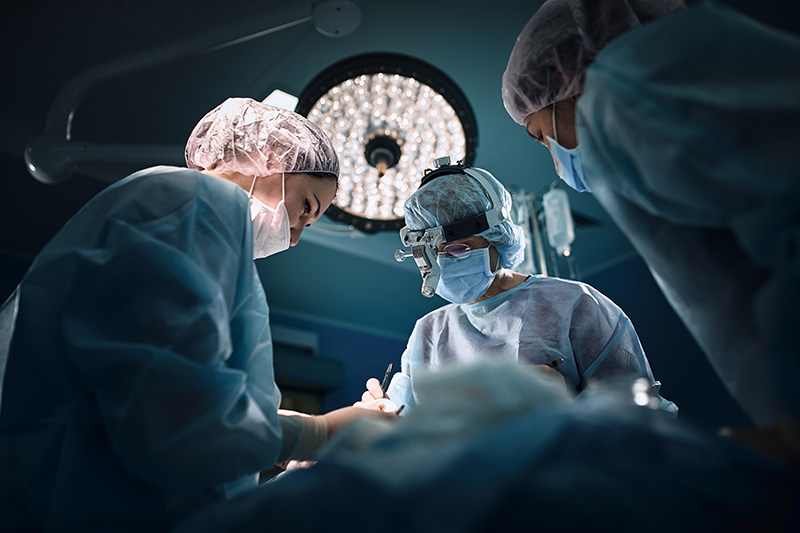
With fire truck parades and flyovers across the country, there have been many deserved tributes to honor the medical heroes who are battling the coronavirus on the front lines.
But the doctors behind the scenes also are heroes. They risk exposure every time they see a patient, and most are concerned about the non-COVID patients who are not getting the medical care they need because elective surgeries and other office-based procedures have been ordered to stop. Many doctors also are sacrificing their own paychecks to keep their practices alive and staff members paid.
A leading physician and my friend Dr. Hal Scherz has a powerful article in The Federalist, “How Coronavirus Shutdowns Are Killing America’s Health Care System.” Dr. Scherz is the managing partner of the largest urology practice in the South and also a tireless champion of private practice physicians through the Docs4PatientCare Foundationhe co-founded.
“We employ more than 400 people, including physicians and advanced practice providers,” he writes. “When the Wuhan virus pandemic hit the United States, we were at first asked, and later ordered, to stop performing elective surgery…We also were told to restrict patient office visits to those with urgent or emergency problems.” The doctors complied of course, always putting the safety of their patients first.
But Dr. Scherz is at least as worried about the impact of the freeze on non-COVID patients. “The ‘elective’ surgeries we can no longer perform are not ‘optional.’ They are important surgeries that need to be done…a biopsy for cancer, or an operation on a diseased organ. Delaying these procedures risks the long-term health of patients.”
Patients also are fearful about coming in for needed care. Dr. Andrea Singer of MedStar Georgetown University Hospital in Washington D.C., told us her facility like countless others is open and is taking extraordinary precautions to keep patients safe, but patients still are reluctant to come in despite these added safety procedures. She estimates that up to 75% of her patients needing their next dose of osteoporosis treatment, which must be administered in a medical setting, will have trouble getting it, placing them at increased risk for bone fractures.
Dr. Scherz says the untold story of this crisis “is of the hundreds of thousands of doctors facing not only the health risks of caring for patients with undiagnosed COVID-19, but also ruinous financial calamity and professional catastrophe, self-inflicted by government.”
He says he and his colleagues are “determined to keep our practice open, but smaller practices will be unable to withstand this financial blow. Those that were forced to shut down may never reopen.” Many physicians will retire or sell their practices to hospitals, becoming employees and losing their autonomy. They also are fearful of predatory trial lawyers ready to pounce on the most well-meaning physicians.
“The COVID crisis has physicians scrambling to maintain their practices, many of them with very low margins to begin with,” said Tim Norbeck, who just retired as executive director of The Physicians Foundation. The Foundation, with Merritt Hawkins, recently conducted a survey of physicians and found that 21% “have been furloughed or experienced pay cuts, 16% will reduce staff, 18% plan to retire, temporarily close their practices, or opt out of patient care. The numbers are staggering!
“Physicians all over the country are taking a mental, physical and financial beating,” Norbeck said.
Private practice medicine is the backbone of American health care, and it must not become yet another victim of the virus.
The next round of federal coronavirus relief would do well to support private practices by indemnifying doctors against frivolous lawsuits that result from this pandemic, making interest-free loans available to doctors so they can reopen their practices, and cutting the red tape that cripples innovation in medical practice, all of which Dr. Scherz recommends.
Testing. Testing. Testing. And to update you on the article that Doug Badger and I wrote last week about lab testing: Congress did include $25 billion for testing support in the legislation the president signed last week, a crucial component of reopening our economy.
USA Today has an excellent piece today explaining the testing struggle, “Coronavirus testing in the U.S. was limited for months because of low Medicare payments.”
The article quotes Aaron Domenico, the chief operating officer of Atlantic Diagnostic Laboratories, who says the cost of processing a simple coronavirus test is $67—including the lab technician’s salary, expensive processing equipment, supplies, and overhead, but Medicare reimbursement for the first several million tests done was only $51, with private plans often paying even less. (Medicare pays $96 for a similar test for the common flu.)
“I’m an American first, and if I could do it for cost, I’d be happy to do it for the people at cost, but I can’t do it below cost,” Domenico said. Medicare did double the reimbursement for processing COVID tests on April 14, but the increase is not retroactive so labs have to absorb the loss—at the same time most of their normal testing business has collapsed. (See above.)
The issue of government underpayment for testing is one we have followed for several years. Doug Badger took a deep dive in a paper, “Can Medicare Pay Market Rates.”
Once again we see how artificial government payment rates percolate through the system, only to be painfully visible in a crisis like we are experiencing today.
